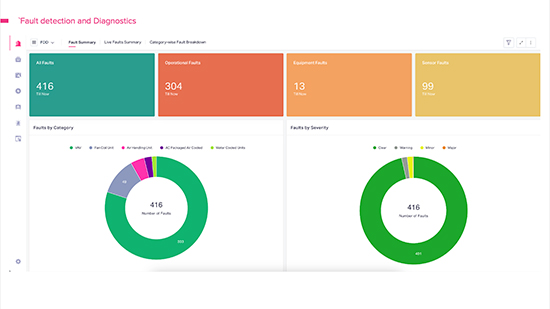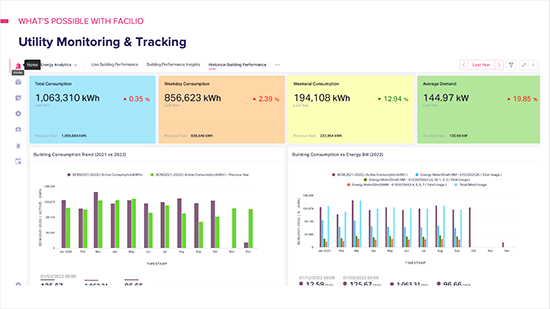In recent years, the concept of smart buildings has transitioned from a futuristic vision to a tangible reality. As the world grapples with the pressing need for energy efficiency and sustainability, smart building enablement has emerged as a critical solution. This technological revolution is not only transforming how buildings are managed but also delivering significant benefits to landlords, including enhanced energy efficiency, improved sustainability, and optimized asset lifecycle management.
The Evolution of Smart Buildings
Smart buildings integrate advanced technologies such as the Internet of Things (IoT), artificial intelligence (AI), and big data analytics to create intelligent, responsive environments. These technologies enable buildings to collect and analyze data from various systems—HVAC, lighting, security, and more—allowing for real-time monitoring and management.
The shift towards smart buildings is driven by several factors:
Increasing Energy Costs:
As energy prices rise, there is a growing demand for solutions that reduce consumption and costs.
Environmental Regulations:
Stricter regulations and sustainability goals are pushing the real estate industry to adopt greener practices.
Technological Advancements:
Innovations in IoT and AI have made smart building technologies more accessible and cost-effective.
Tenant Expectations:
Modern tenants expect intelligent, efficient, and environmentally friendly spaces.
Enhancing Energy Efficiency
One of the most significant advantages of smart buildings is their ability to enhance energy efficiency. Smart buildings utilize IoT sensors and AI-driven analytics to optimize energy usage. For instance, smart HVAC systems can adjust heating and cooling based on occupancy patterns and weather forecasts, reducing unnecessary energy consumption. Similarly, smart lighting systems can adjust illumination based on natural light availability and occupancy.
These technologies provide landlords with detailed insights into energy consumption patterns, enabling them to identify inefficiencies and implement corrective measures. This not only reduces operational costs but also minimizes the building's carbon footprint, contributing to broader sustainability goals.
Promoting Sustainability
Sustainability is at the heart of smart building enablement. By integrating renewable energy sources such as solar panels and energy storage systems, smart buildings can significantly reduce their reliance on fossil fuels. Additionally, advanced water management systems can optimize water usage and recycling, further enhancing the building's environmental performance.
Smart buildings also support sustainable practices through real-time monitoring and reporting. Landlords can track key sustainability metrics, such as energy usage, water consumption, and waste generation, ensuring compliance with environmental regulations and sustainability certifications like LEED (Leadership in Energy and Environmental Design).
Optimizing Asset Lifecycle Management
Smart building technologies are revolutionizing asset lifecycle management by providing landlords with unprecedented visibility and control over their assets. IoT sensors can monitor the condition of critical building systems and equipment, predicting maintenance needs before issues become critical. This predictive maintenance approach reduces downtime, extends the lifespan of assets, and lowers maintenance costs.
Moreover, smart buildings facilitate better space utilization. By analyzing occupancy data, landlords can optimize the use of available space, ensuring that every square foot is used efficiently. This not only improves tenant satisfaction but also maximizes rental income.
Case Studies and Real-World Applications
Several real-world examples illustrate the transformative impact of smart building enablement. For instance, The Edge in Amsterdam, often hailed as the greenest building in the world, uses an extensive network of IoT sensors to manage lighting, climate control, and space utilization, achieving remarkable energy efficiency and sustainability.
Similarly, in the United States, the Salesforce Tower in San Francisco leverages smart building technologies to optimize energy usage and enhance occupant comfort, contributing to its LEED Platinum certification.
Conclusion
The current state of smart building enablement marks a pivotal moment in the real estate industry. As landlords embrace these technologies, they unlock numerous benefits, including enhanced energy efficiency, improved sustainability, and optimized asset lifecycle management. These advancements are not only essential for reducing operational costs and meeting regulatory requirements but also for creating intelligent, sustainable spaces that meet the evolving expectations of modern tenants.
As we move towards a more connected and environmentally conscious future, smart buildings will undoubtedly play a crucial role in shaping the real estate landscape, driving innovation, and fostering a sustainable, efficient, and resilient built environment.
"Implementing smart building technologies has not only drastically reduced our energy costs but also positioned us at the forefront of sustainability. The insights and efficiencies gained have transformed our approach to asset management, ensuring a greener, more efficient future for our properties."
Example Smart Building Platform Dashboards.


